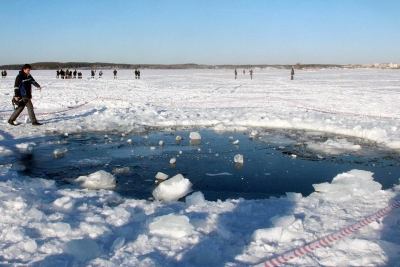
On February 15, 2013, A powerful meteor broke up over the city of Chelyabinsk, Russia, on Feb. 15, 2013, producing powerful shockwaves which shattered glasses, injured over 1490 people and damaged over 4,300 buildings. The blast scattered meteor shards across the region and left big holes in the ice- covered Lake Chebarkul. Chelyabinsk, as the meteor came to be known, was no ordinary rock. It was a superbolide, an extremely bright meteor capable of exploding in the atmosphere. It entered Earth at a speed of 69,000 km/h and was observed over a wide area of the region. The same day a 130-foot asteroid called 2012 DA14 gave Earth a close shave, missing our planet by just 27,000 km. But the two space rocks are unrelated.
In the next 10 million years, large rock pieces (along with some dust) combined to create an asteroid about 60 miles (100 km) wide, Kring said. This parent body sustained a large impact with another space object about 125 million years after the solar system was formed, with more strikes coming during the “late heavy bombardment” period — a time of frequent small-body strikes that occurred between 3.8 billion and 4.3 billion years ago. Two other impacts have come in the last 500 million years. Closer to the Chelyabinsk event, the parent body experienced yet another impact and was also nudged out of the main asteroid belt into an orbit that crossed near Earth’s.
Initially, the Chelyabinsk bolide was thought to be part of 1999 NC43, an asteroid that’s 1.24 miles (2 km) wide, but the orbit and mineral composition between the two bodies turned out to be different. In April 2015, a study in the Monthly Notices of the Royal Astronomical Society suggested Chelyabinsk had been a part of asteroid 2014 UR116.
Picture Credit : Google

